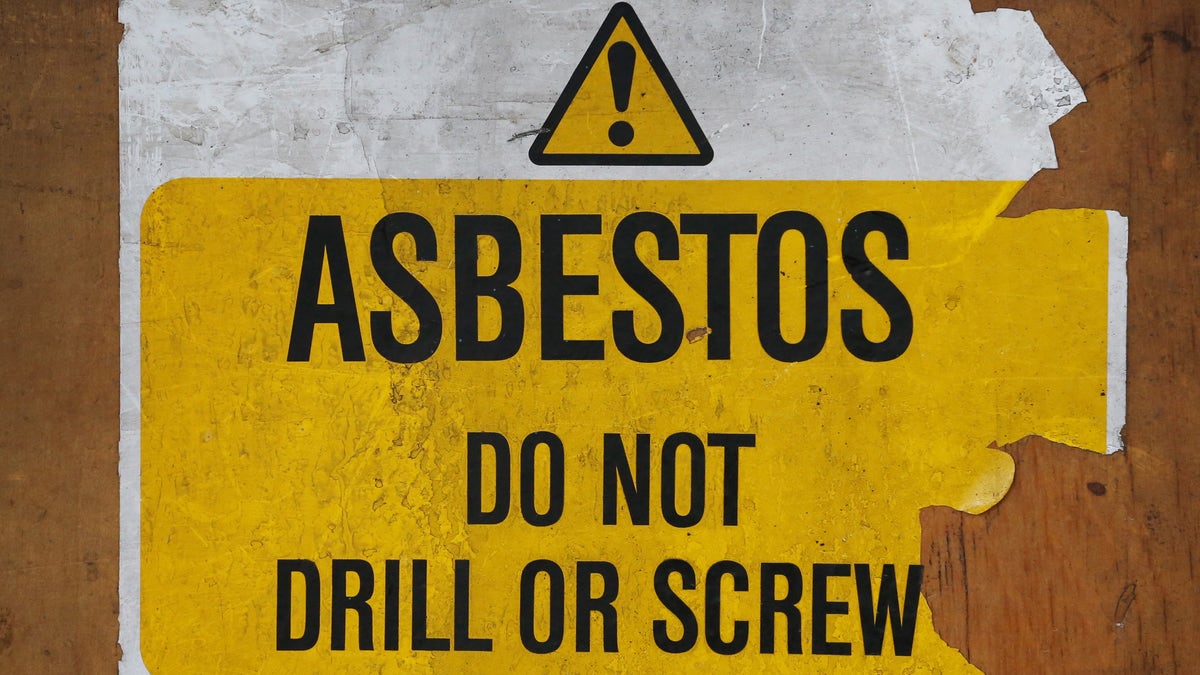
LONDON, ENGLAND - OCTOBER 11: A sign warns of asbestos danger at a former Royal Mail sorting office on October 11, 2013 in London, England. (Photo by Peter Macdiarmid/Getty Images) (2013 Getty Images)
TORONTO – Canada has set a 2018 target to ban asbestos and products containing the fire-resistant material, which is linked to cancer and other illnesses, the government said on Thursday in a move that brings the country in line with much of the developed world.
Canada also will review its position on a global blacklist of the toxic material before a U.N. meeting on the issue next year, part of a plan that includes new domestic regulations and workplace rules.
Successive Canadian governments had worked against the hazardous material listing under the United Nations' Rotterdam Convention, fearful it would put Quebec asbestos mining out of business. They also refused to ban asbestos production, arguing it was not harmful if used appropriately.
In 2012, Canada dropped its longtime opposition to the international listing, after Quebec mine production and export had ended.
At the time, Canada was the only Western developed country to export asbestos, declared a carcinogen by the World Health Organization in 1987. It had continued its export despite strictly regulating its domestic use.
Canada said Thursday it will create new regulations banning the use, manufacture, import and export of the substance and create new workplace health and safety rules to limit the risk of exposure. It also plans building codes to prohibit the use of asbestos in new construction and renovation projects.
Canada continues to import products with asbestos, such as brake pads, the Canadian Labour Congress said, with imports growing to C$8.3 million ($6.2 million) in 2015 from C$4.7 million in 2011.
More than 2,000 Canadians die each year from diseases caused by asbestos exposure, the labor group said.
Valued since Roman times for its heat-resistant properties, asbestos pervaded construction sites, industrial settings and ship and rail yards for much of the 20th century. Canada, the United States, Russia and South Africa were major producers.




















